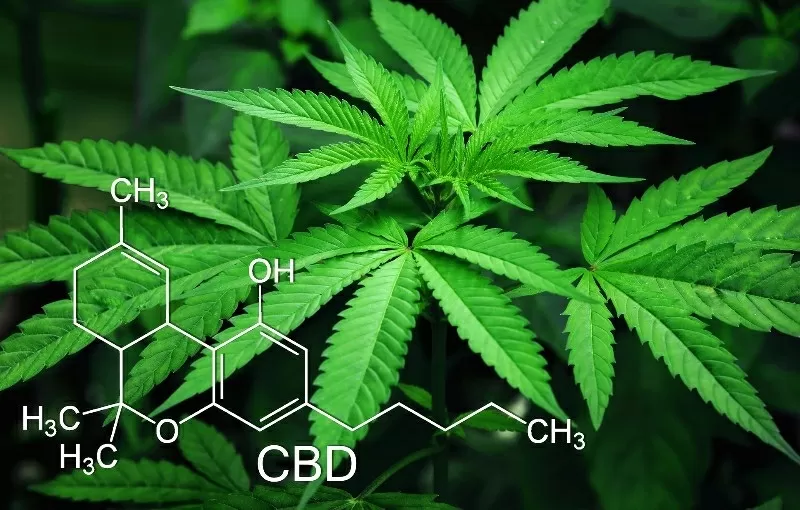The cannabis industry has experienced rapid growth and development in recent years, largely driven by the increasing popularity of cannabidiol (CBD). As demand for CBD products continues to rise, manufacturers are looking for new and innovative ways to enhance the efficacy, bioavailability, and stability of CBD. One promising technology that has gained significant attention is CBD nano technology. In this article, we will delve into the world of CBD nano technology, exploring its benefits, applications, and limitations.

What is CBD Nano Technology?
CBD nano technology involves the use of tiny particles, known as nanoparticles, to improve the delivery and bioavailability of CBD. Nanoparticles are extremely small, typically measuring between 1 and 100 nanometers in size. By encapsulating CBD within these particles, manufacturers can enhance its ability to penetrate the body and interact with target cells, leading to improved efficacy and reduced toxicity.
The process of creating CBD nanoparticles typically involves the use of liposomes, which are microscopic vesicles composed of a phospholipid bilayer. These liposomes are designed to encapsulate the CBD molecule, protecting it from degradation and improving its ability to cross cellular membranes.
Benefits of CBD Nano Technology
So, what are the advantages of using CBD nano technology? Some of the key benefits include:
- Improved bioavailability: By reducing the particle size of CBD, nano technology increases its surface area, allowing it to be absorbed more easily and effectively by the body.
- Enhanced efficacy: The improved bioavailability and uptake of CBD nanoparticles can lead to enhanced therapeutic effects, as more of the active compound is available to interact with target cells.
- Reduced toxicity: The encapsulation of CBD within nanoparticles helps to protect it from degradation, reducing the risk of toxicity and side effects.
- Increased stability: CBD nanoparticles are less susceptible to oxidation and degradation, making them more stable and long-lasting than traditional CBD products.
- Customization: CBD nano technology allows for the creation of targeted delivery systems, enabling manufacturers to tailor their products to specific needs and applications.
Applications of CBD Nano Technology
The potential applications of CBD nano technology are vast and varied, with several key areas of focus:
- Topical creams and lotions: CBD nanoparticles can be incorporated into topical creams and lotions, providing rapid and effective absorption of the active compound.
- Oral supplements: The improved bioavailability of CBD nanoparticles makes them an attractive option for oral supplements, which can be challenging to absorb.
- Injectable treatments: The use of CBD nanoparticles in injectable treatments offers potential for enhanced efficacy and reduced side effects.
- Cosmetics: CBD nano technology can be used in the creation of high-performance cosmetics, such as skincare products, hair care products, and sunscreens.
- Pharmaceuticals: The increased stability and bioavailability of CBD nanoparticles make them a promising option for pharmaceutical applications, including the development of new medications.
Limitations and Concerns
While CBD nano technology holds great promise, there are several limitations and concerns that must be addressed:
- Regulatory uncertainty: The regulatory landscape surrounding CBD nano technology is complex and uncertain, with varying laws and regulations across different countries and jurisdictions.
- Safety concerns: The use of nanoparticles in CBD products raises safety concerns, particularly related to potential toxicity and long-term effects.
- Purity and quality: The quality and purity of CBD nano technology products can be difficult to ensure, leading to concerns about authenticity and efficacy.
- Cost: The high cost of CBD nano technology products can make them inaccessible to some consumers.
FAQ
Q: What is the difference between CBD nano technology and traditional CBD products?
A: CBD nano technology involves the use of nanoparticles to improve the bioavailability and efficacy of CBD, whereas traditional CBD products rely on solvent-based extraction methods.
Q: Is CBD nano technology safe?
A: While the long-term effects of CBD nano technology are still unknown, the use of nanoparticles in this context is generally considered safe.
Q: Can I use CBD nano technology products if I have a CBD tolerance?
A: Depending on the specific product and formulation, CBD nano technology products may be effective in managing tolerance.
Q: Can I use CBD nano technology products if I have a medical condition?
A: It is essential to consult with a healthcare professional before using CBD nano technology products, particularly if you have a medical condition.
Conclusion
CBD nano technology is a rapidly evolving field with significant potential for enhancing the efficacy, bioavailability, and stability of CBD. By leveraging the benefits of nanotechnology, manufacturers can create innovative products that offer improved therapeutic effects, reduced toxicity, and increased stability. However, it is essential to address the limitations and concerns surrounding CBD nano technology, including regulatory uncertainty, safety concerns, purity and quality issues, and cost.
As the cannabis industry continues to grow and mature, CBD nano technology is poised to play a critical role in shaping the future of CBD products. By exploring the potential applications and limitations of this technology, manufacturers and regulators can work together to ensure the creation of safe, effective, and accessible CBD products that meet the needs of consumers worldwide.
References:
- European Commission (2020). Nanotechnology in Cosmetics. https://ec.europa.eu/environment/chemicals/cosmetics/nanotechnology_en.htm
- WHO (2010). Nanotechnology and the Environment. [https://www.who.int/ipcs/pop/biosafety/WHO Nano Report 2010.pdf](https://www.who.int/ipcs/pop/biosafety/WHO Nano Report 2010.pdf)
- PubChem (2022). Cannabidiol. https://pubchem.ncbi.nlm.nih.gov/compound/644044
- Journal of Phytomedicine (2020). CBD nanoparticle formulations for delivery of cannabinoids. https://www.sciencedirect.com/science/article/pii/S0944711320301038
This article does not intend to provide investment advice or to encourage or promote any product that does not have medical-grade CBD and does not intend to create any doubt about CBD research and products
Closure
Thus, we hope this article has provided valuable insights into The Future of CBD: Unlocking the Potential of Nanotechnology. We appreciate your attention to our article. See you in our next article!